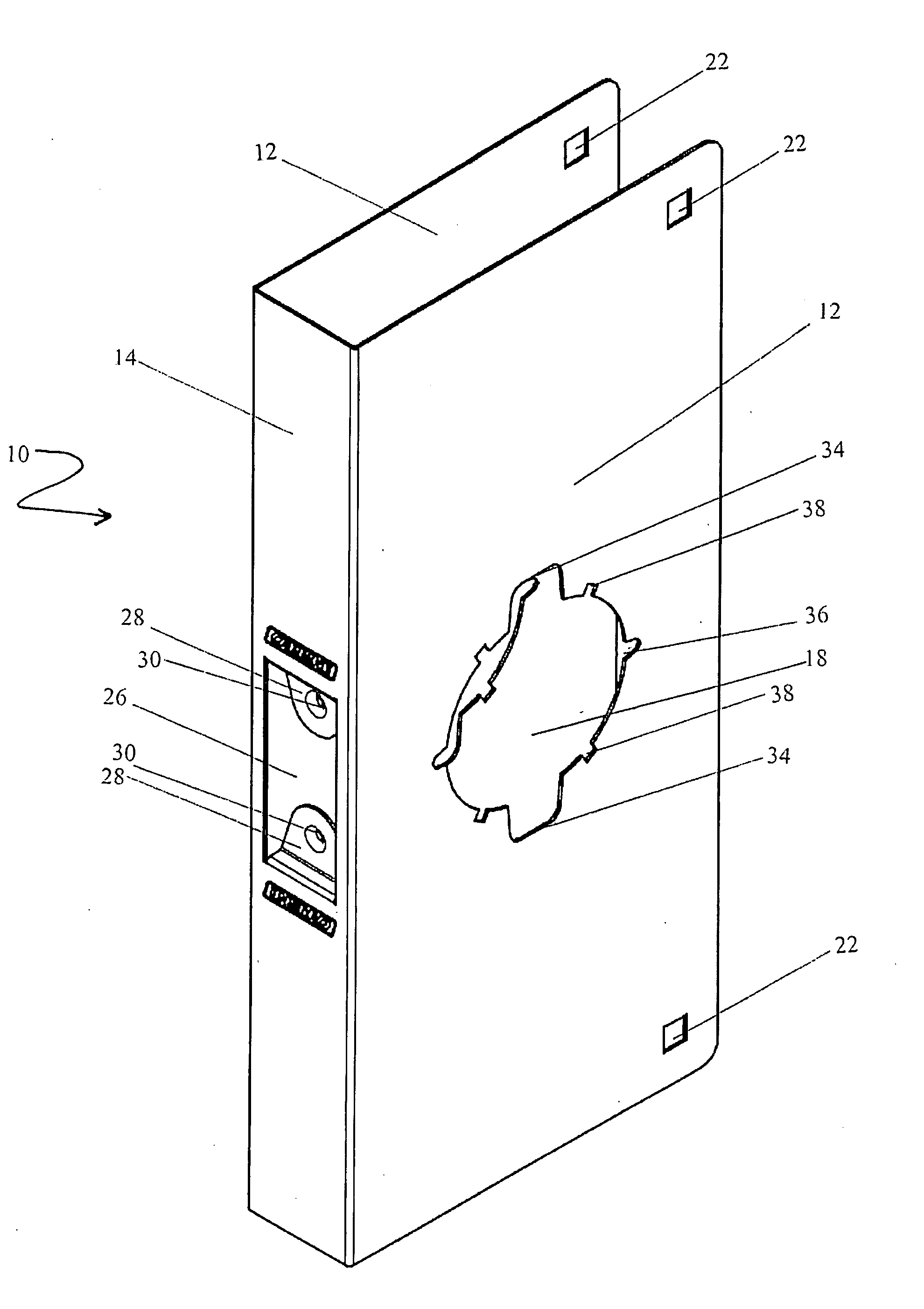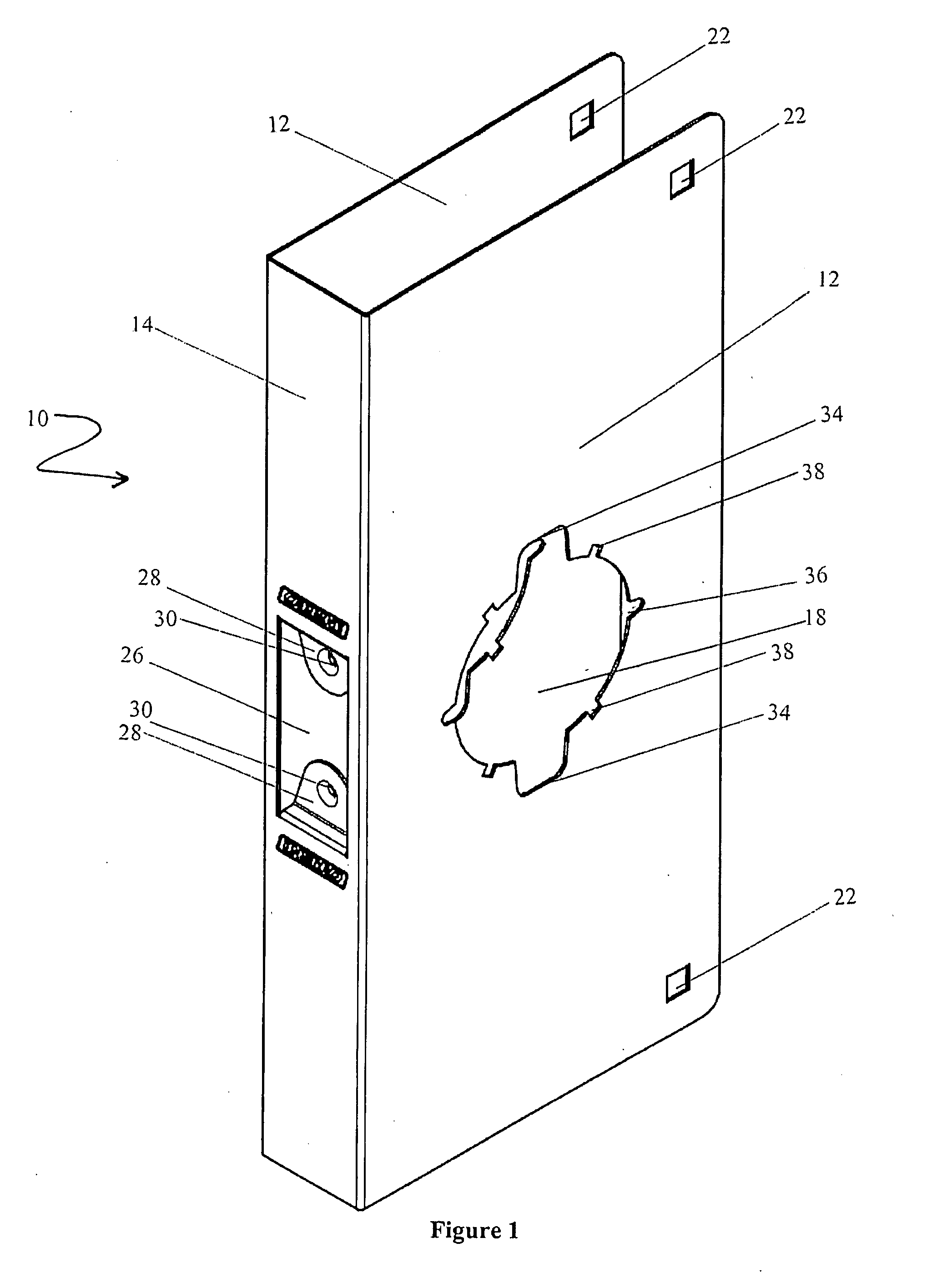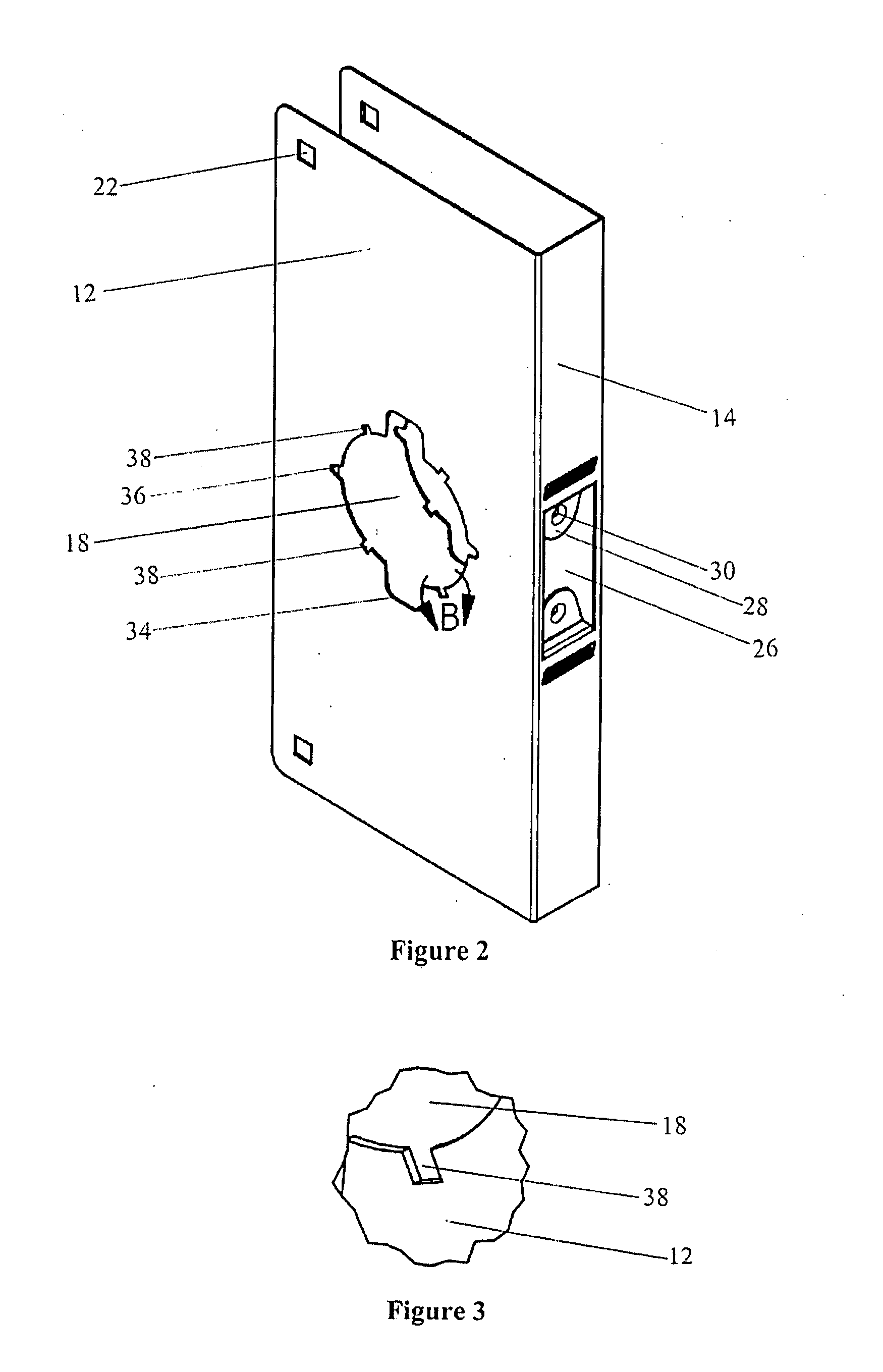Cover plate and adaptor
a technology of adaptor and cover plate, which is applied in the direction of door/window fittings, fastening means, lock casings, etc., can solve the problems of door damage, door damage, and the area in which the handle is installed becoming too damaged to receive a new handle, and achieve the effect of reducing the size of the apertur
- Summary
- Abstract
- Description
- Claims
- Application Information
AI Technical Summary
Benefits of technology
Problems solved by technology
Method used
Image
Examples
Embodiment Construction
[0057] The invention will now be described in connection with a non-limiting preferred embodiment with reference to the accompanying drawings.
[0058] Referring to FIGS. 1 to 4, cover plate 10 has a pair of opposed flanges 12 joined, one to the other, by spine 14. Spine 14 is configured to maintain flanges 12 in a spaced apart configuration suitable for installation around the edge of door 16 (refer FIG. 9). The width of spine 14 may be any suitable width corresponding to the thickness of door 16 (refer FIG. 9) to which cover plate 10 is to be installed. Typical widths of spine 14 include, but are not limited to, 32 mm, 35 mm, 40 mm, and 45 mm. Although flanges 12 are illustrated as rectangular shapes, any suitable shape may be used. Similarly, spine 14 is illustrated as an elongate rectangular shape but any suitable shape can be used. Spine 14 need not be a solid piece and may contain numerous apertures formed of strips, or otherwise.
[0059] Apertures 18 are formed one in each flang...
PUM
 Login to View More
Login to View More Abstract
Description
Claims
Application Information
 Login to View More
Login to View More - R&D
- Intellectual Property
- Life Sciences
- Materials
- Tech Scout
- Unparalleled Data Quality
- Higher Quality Content
- 60% Fewer Hallucinations
Browse by: Latest US Patents, China's latest patents, Technical Efficacy Thesaurus, Application Domain, Technology Topic, Popular Technical Reports.
© 2025 PatSnap. All rights reserved.Legal|Privacy policy|Modern Slavery Act Transparency Statement|Sitemap|About US| Contact US: help@patsnap.com



